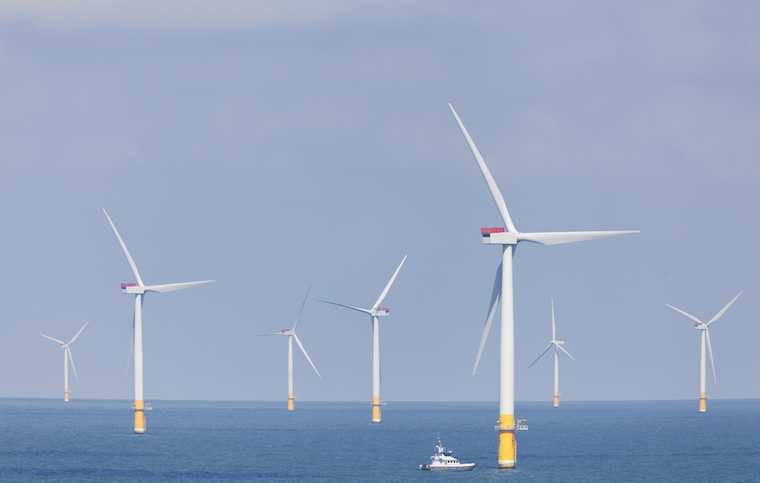The Energy Department is hoping to revolutionize the potential of wind energy through a new design under development for mega-size offshore wind turbines that could each generate 50 megawatts of energy.
Research is ongoing at Sandia National Laboratories, where top experts from around the world are laying out plans for some truly enormous turbine blades -- Segmented Ultralight Morphing Rotors (SUMR) -- that will be 656 feet long, or over two football fields. That’s two and a half times longer than any other blade producing clean energy today.
The 50-megawatt blades will be segmented so they can be folded up and are designed to be cost effective.
To answer this challenge the DOE has assembled a team of top experts from universities from around the country, including the University of Virginia, the University of Illinois, the University of Colorado and the Colorado School of Mines. U.S. corporate partners include Sandia, Dominion Resources and General Electric. Foreign partners include two of Europe’s largest wind-turbine producers: Germany’s Siemens AG and Denmark’s Vestas Wind Systems.
“The U.S. has great offshore wind-energy potential, but offshore installations are expensive, so larger turbines are needed to capture that energy at an affordable cost,” Todd Griffith, lead blade designer on the project and technical lead for Sandia’s Offshore Wind Energy Program, said.
Most of America’s current wind turbines can produce power in the range of 1-2 megawatts, with the upper end of turbines capable of producing up to 8 megawatts. Griffith said new designs would improve on energy output and would be cheaper to build and maintain.
“Conventional upwind blades are expensive to manufacture, deploy and maintain beyond 10-15 megawatts,” Griffith said. “They must be stiff to avoid fatigue and eliminate the risk of tower strikes in strong gusts. Those stiff blades are heavy, and their mass, which is directly related to cost, becomes even more problematic at the extreme scale due to gravity loads and other changes.”
To answer that challenge the DOE has assembled a team of top experts from universities from around the country, including the University of Virginia, the University of Illinois, the University of Colorado and the Colorado School of Mines. U.S. corporate partners include Sandia, Dominion Resources and General Electric. Foreign partners include two of Europe’s largest wind-turbine producers: Germany’s Siemens AG and Denmark’s Vestas Wind Systems.


 Alerts Sign-up
Alerts Sign-up